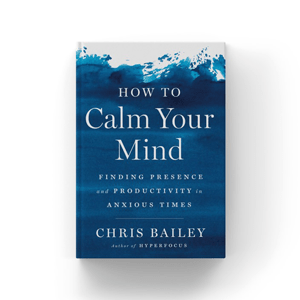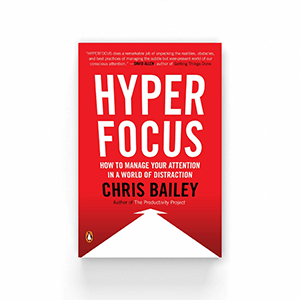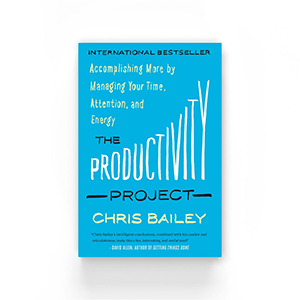Estimated Reading Time: 4 minutes, 18s.

The question I receive the most often, by far, is about my daily routine.
Before delving any deeper, I should mention that my daily routine is weird as hell. Because I don’t have a traditional job—I work for myself, at home—I have a lot of freedom to set my own schedule, provided I’m not traveling. Since this is more flexibility than most, you should probably take a good portion of this post with a grain of salt.
That said, the daily routine I’ve settled into these past few years is nearly perfect—for me. Frankly, it would be a surprise if it wasn’t. As someone deeply curious about productivity, I’ve made incremental improvements to my daily routine over time in order to make it as productive as possible, and to take advantage of when I’m the most productive and creative. I’ve looked closely at how much I accomplish each day for the past few years (since starting my productivity project), and have tweaked my routine based on these observations. The result of this experimentation is below.
How to tell when you’re the most productive and creative
A daily routine is powerful for one simple reason: not all hours of your day are created equal. There are certain times when you’ll naturally have more (or less) energy. Once you identify those hours, you can take advantage of them.
It’s worth figuring out these hours before creating your daily routine. Doing this is actually quite easy—your most productive hours are when you have the most energy, and your most creative hours are when you have the least energy (because your brain is the less inhibited).
My energy levels peak between 10 a.m. and noon, and between 5 and 8 p.m., so that’s when I work on tasks that benefit from that extra energy. On the contrary, I do creative work immediately after I wake up, and before I head to bed.
So without further ado, here’s how I spend an average day!
My daily routine
8 a.m.—10 a.m.: Get up, eat breakfast (this usually consists of two tablespoons of chia seeds mixed with water, along with a huge chicken caesar salad); read the The New York Times morning email briefing (highly recommended—subscribe here); work out or play the piano if it’s not a gym day; shower. If I’m working on a project that requires creativity—such as brainstorming a book or creating a talk outline—I’ll start working immediately after waking up.
10 a.m.: This is when I usually start working—but only after I review the three daily intentions I set the night before, and the three weekly intentions I set on Sunday. I find reviewing these productivity tactics nimble enough to do every day, and agile enough that I can get to work quickly.
10 a.m.—12 p.m.: Work on my three daily tasks and any work that requires significant energy and attention.
12 p.m.—1 p.m.: Small snack, relax, and read.
1 p.m.—3 p.m.: Work on less important tasks that I can’t delegate or decline. This includes attending conference calls, and general mindless work, and maintenance tasks like catching up with email and scheduling travel.
3 p.m.—4 p.m.: Check my email, and completely empty my inboxes. While I have a private, priority email address that I check throughout the day, I try to visit my main email accounts just once a day. I both love and hate this hour of the day. I also review my Waiting For list during this time.
4 p.m.: Lunch
5 p.m.—8 p.m.: Continue working on my three daily tasks.
8 p.m.—8:30 p.m.: Set daily intentions for the next day (so I have time to process them), reflect on my weekly intentions, and note my highest-leverage tasks.
8 p.m.: Disconnect. I put my smartphone on airplane mode between 8 p.m. and 8 a.m. each day. I’m most distraction prone between these hours.
8 p.m.: Dinner, and spend quality time with my girlfriend.
9 p.m.—midnight: Personal time. I usually spend this time with friends, reading, listening to nerdy technology podcasts, meditating, or on other meaningful (and not-so-meaningful things).
Why this routine is so powerful
As I’ve made improvements to this routine over time, I’ve found it’s powerful for several reasons, all of which are worth considering when you craft your routine:
- It lets me consider my daily constraints—like how many hours of meetings I have, or whether I’ll be traveling. This means I can adjust my intentions accordingly.
- The routine contains frequent breaks, and a set time each day to disconnect from work, which lets me decompress and recharge.
- The routine contains time to spend on would-be work disruptions like email, so I can focus on my most important work during other hours of the day.
- The routine lets me continually cultivate my energy levels throughout the day, by eating well, getting enough physical activity, and sleeping enough every night.
- The routine is built around how much (and how little) energy I have. Like the best productivity tactics out there, this lets me work smarter, instead of just harder.
- It’s productive and creative—because I rejigger my daily routine to match how much energy I have.
Keep these rules in mind if you’re looking to create a killer routine for yourself!




